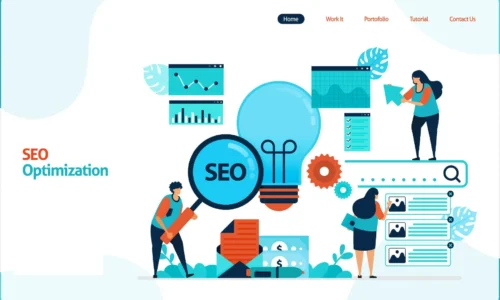What Is SEO – Search Engine Optimization?
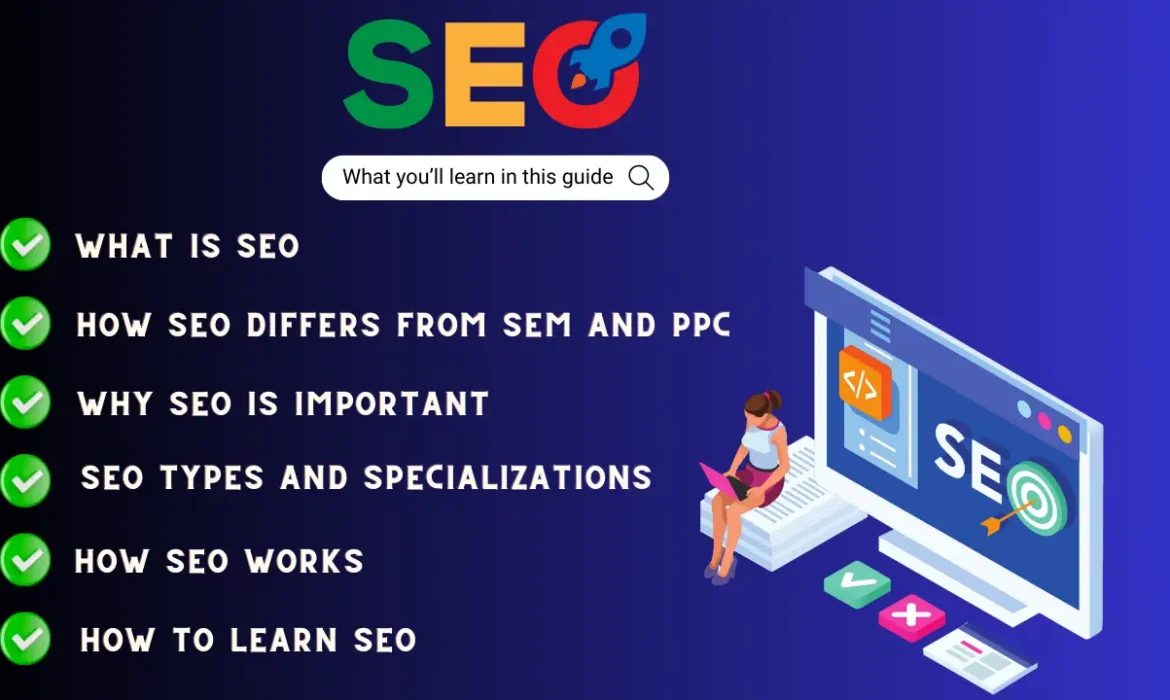
SEO, or Search Engine Optimization, refers to the practice of optimizing websites, content, and online presence to improve visibility and ranking on search engine results pages (SERPs). The primary goal of SEO is to increase organic (non-paid) traffic by enhancing a website’s relevance and authority in the eyes of search engines like Google, Bing, and Yahoo.
What you’ll learn in this guide:
- What Is SEO – Search Engine Optimization?
- How is SEO different from SEM and PPC?
- Why SEO is important
- SEO types and specializations
- How SEO works
- How to learn SEO
What Is SEO – Search Engine Optimization?
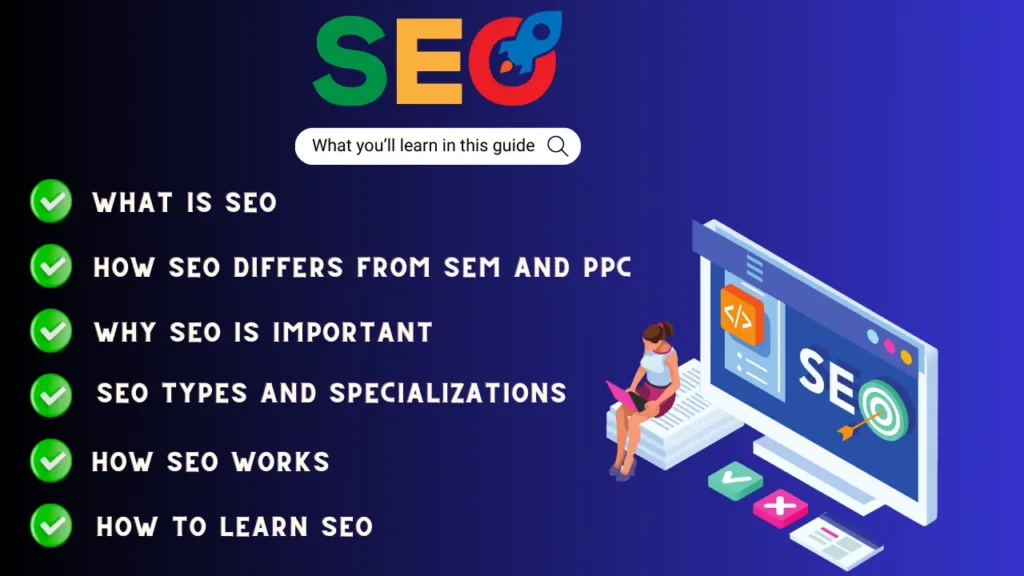
In the digital realm, where online visibility can make or break a business, the term “SEO” often floats around conversations about website performance and marketing strategies. But what exactly is SEO, and why is it so crucial in today’s digital landscape?
What Is SEO
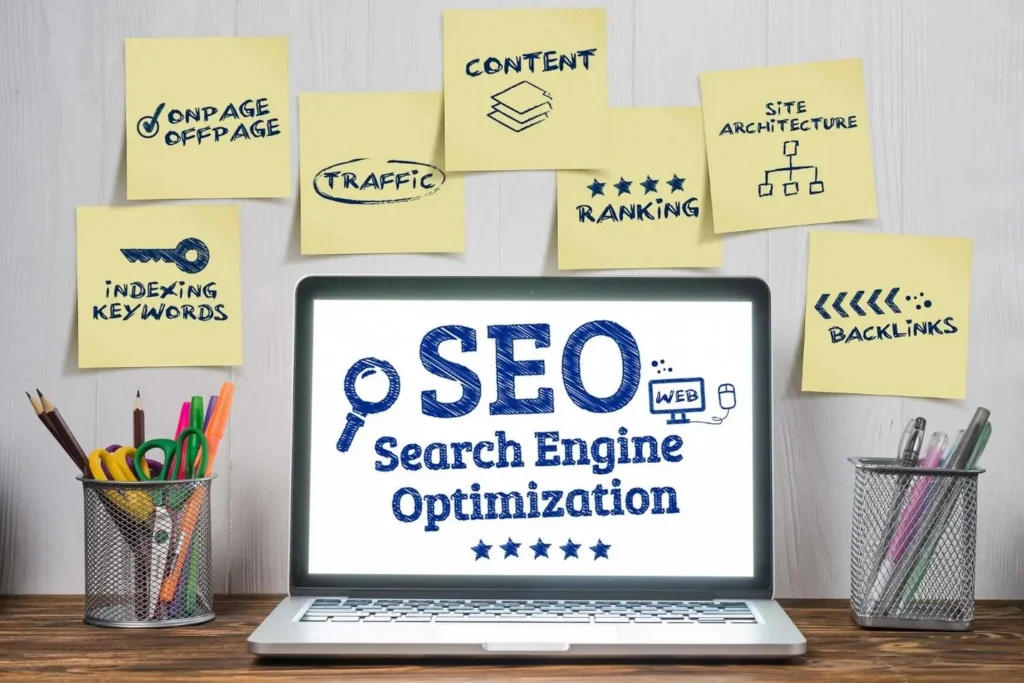
SEO, which stands for Search Engine Optimization, is the practice of optimizing web content and websites to improve their visibility and ranking on search engine results pages (SERPs). In simpler terms, it’s about making your online presence more attractive to search engines like Google, Bing, and Yahoo, so they’re more likely to display your website when users search for relevant keywords or phrases.
What exactly is SEO, and why is it crucial for online success?
How is SEO different from SEM and PPC?
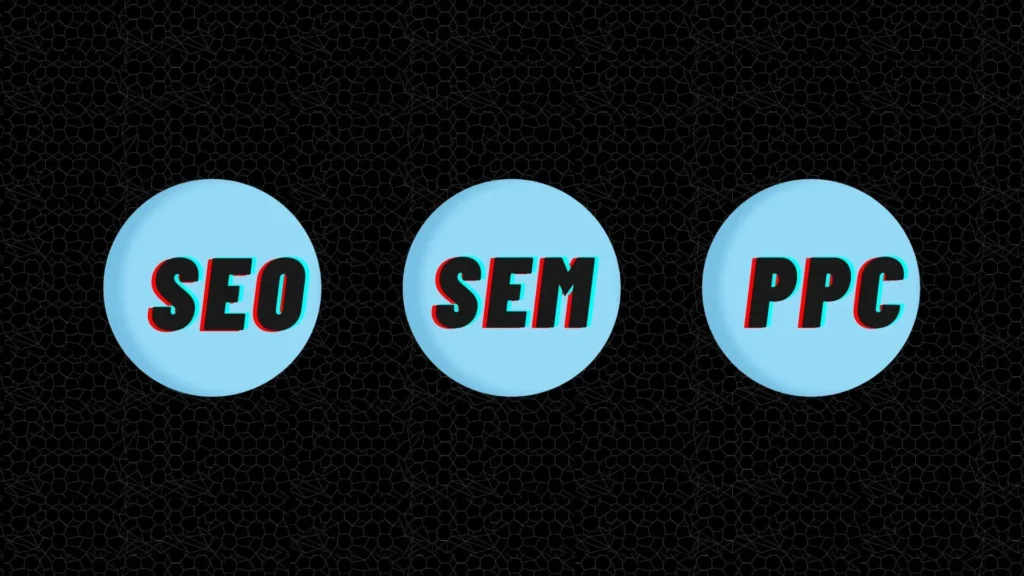
In the expansive world of digital marketing, three acronyms often dominate discussions: SEO, SEM, and PPC. While they all share the common goal of driving traffic to websites, each serves distinct purposes and utilizes different strategies to achieve results.
Understanding the differences between these three pillars is crucial for businesses looking to develop effective online marketing strategies.
Let’s delve into each one and explore their unique characteristics.
SEO: Search Engine Optimization
Search Engine Optimization (SEO) is a multifaceted approach to improving a website’s visibility in organic (non-paid) search engine results. It involves optimizing various elements of a website and its online presence to enhance its relevance and authority in the eyes of search engines like Google, Bing, and Yahoo.
Here are the core aspects of SEO
- 1. Keyword Research and Analysis
- Conducting thorough research to identify relevant keywords and phrases that potential customers use when searching for products, services, or information related to your business.
- Analyzing keyword competitiveness, search volume, and user intent to prioritize target keywords for optimization.
- 2. On-Page Optimization
- Optimizing HTML elements such as titles, meta descriptions, headings, and image alt attributes to align with targeted keywords and improve search engine crawlability.
- Enhancing website content by incorporating targeted keywords naturally and providing valuable information that satisfies user intent.
- Improving website structure, navigation, and internal linking to enhance user experience and facilitate search engine indexing.
- 3. Off-Page Optimization
- Building a diverse portfolio of high-quality backlinks from authoritative and relevant websites to demonstrate credibility and authority to search engines.
- Engaging in strategic outreach, guest blogging, and content promotion to earn natural backlinks and mentions from reputable sources.
- Monitoring and managing online reviews, citations, and social media mentions to enhance brand visibility and reputation.
- 4. Content Creation and Optimization
- Creating comprehensive, relevant, and engaging content that addresses the needs, interests, and pain points of the target audience.
- Incorporating targeted keywords naturally within content while maintaining readability and relevance.
- Diversifying content formats (e.g., articles, blog posts, infographics, videos) to cater to different user preferences and improve engagement.
- 5. Technical SEO
- Optimizing website performance, speed, and mobile-friendliness to enhance user experience and meet search engine requirements.
- Implementing structured data markup (e.g., schema.org) to provide search engines with additional context about website content.
- Resolving technical issues such as crawl errors, broken links, duplicate content, and HTML markup errors that may hinder search engine indexing and ranking.
- 6. Continuous Monitoring and Analysis
- Monitoring website performance metrics such as organic traffic, keyword rankings, backlink profile, and conversion rates to assess the effectiveness of SEO efforts.
- Analyzing competitor strategies, industry trends, and search engine algorithm updates to adapt and refine SEO strategies accordingly.
- Utilizing analytics tools (e.g., Google Analytics, Google Search Console) and SEO software to track progress, identify opportunities, and make data-driven decisions.
By implementing a comprehensive SEO strategy that encompasses these key elements, businesses can improve their online visibility, attract targeted traffic, and ultimately, achieve their marketing objectives in the competitive digital landscape.
SEM: Search Engine Marketing
Search Engine Marketing (SEM) encompasses various strategies and techniques aimed at increasing a website’s visibility in search engine results pages (SERPs) through paid advertising. SEM primarily involves Pay-Per-Click (PPC) advertising, where advertisers bid on keywords to display their ads prominently in search results.
Here are the core elements of SEM
- 1. Keyword Research and Selection
- Conduct thorough keyword research to identify relevant search terms with high commercial intent.
- Select target keywords based on factors such as search volume, competition, and relevance to your products or services.
- 2. Ad Campaign Setup and Management
- Create targeted ad campaigns on search engine advertising platforms like Google Ads (formerly Google AdWords) and Bing Ads.
- Structure campaigns into ad groups based on related keywords and themes to improve ad relevance and performance.
- Set bid strategies, budgets, and targeting options to reach your desired audience effectively.
- 3. Ad Copywriting and Ad Extensions
- Craft compelling ad copy that grabs attention, highlights unique selling propositions (USPs), and includes relevant keywords.
- Utilize ad extensions (such as sitelinks, callouts, and structured snippets) to provide additional information and enhance ad visibility and engagement.
- 4. Bid Management and Optimization
- Monitor ad performance metrics such as click-through rate (CTR), conversion rate, and cost per conversion.
- Adjust bids based on performance data to optimize ad positioning, maximize click volume, and improve return on investment (ROI).
- 5. Ad Targeting and Segmentation
- Refine ad targeting based on factors such as location, device, demographics, interests, and remarketing lists.
- Segment audiences and tailor ad messaging to specific user groups for more personalized and effective campaigns.
- 6. Ad Testing and Experimentation
- Conduct A/B tests to compare different ad creatives, messaging, and landing pages to identify top-performing variations.
- Experiment with ad formats, bidding strategies, and targeting options to find the most effective combination for your goals.
- 7. Remarketing and Display Advertising
- Implement remarketing campaigns to re-engage users who have previously visited your website but did not convert.
- Explore display advertising on the Google Display Network (GDN) and other ad networks to reach users across a wide range of websites and platforms.
- 8. Performance Tracking and Reporting
- Use analytics tools like Google Analytics and Google Ads reporting to track campaign performance, measure key metrics, and analyze results.
- Generate regular reports to evaluate the effectiveness of SEM campaigns, identify areas for improvement, and make data-driven decisions.
- 9. Landing Page Optimization
- Optimize landing pages to align with ad messaging, provide a seamless user experience, and encourage desired actions (e.g., form submissions, purchases).
- Test different landing page elements, such as headlines, calls-to-action (CTAs), and form fields, to improve conversion rates.
- 10. Budget Allocation and ROI Analysis
- Allocate budgets effectively across campaigns, ad groups, and keywords based on performance and ROI.
- Calculate return on investment (ROI) for SEM campaigns by comparing advertising costs to revenue generated and other conversion metrics.
SEM offers businesses a highly targeted and measurable way to reach potential customers at the moment they’re searching for products or services. By leveraging SEM tactics effectively, businesses can drive relevant traffic, increase brand visibility, and achieve their marketing objectives efficiently.
PPC: Pay-Per-Click Advertising
PPC advertising allows advertisers to bid on keywords or target specific audience demographics, interests, and behaviors. When users search for relevant keywords or fit the targeting criteria, ads are displayed, and advertisers pay a fee only when their ad is clicked.
Here are the core components and tactics of PPC advertising
- 1. Keyword Research and Selection
- Conduct comprehensive keyword research to identify relevant search terms with high commercial intent.
- Select target keywords based on factors such as search volume, competition, and relevance to your products or services.
- Use keyword research tools like Google Keyword Planner, SEMrush, or Ahrefs to identify valuable keywords for your PPC campaigns.
- 2. Ad Campaign Setup and Structure
- Create well-organized ad campaigns with structured ad groups based on related keywords or themes.
- Customize campaign settings such as ad delivery method, bidding strategy, budget, and targeting options.
- Group keywords into tightly themed ad groups to improve ad relevance and Quality Score.
- 3. Ad Copywriting and Ad Extensions
- Craft compelling ad copy that includes relevant keywords, highlights unique selling propositions (USPs), and encourages clicks.
- Utilize ad extensions such as sitelinks, callouts, and structured snippets to provide additional information and improve ad visibility and engagement.
- Test different ad variations to identify top-performing messaging and creative elements.
- 4. Bid Management and Optimization
- Monitor ad performance metrics such as click-through rate (CTR), conversion rate, and cost per conversion.
- Adjust bids based on performance data to optimize ad positioning, maximize click volume, and improve return on investment (ROI).
- Utilize bid strategies like manual bidding, automated bidding, and bid adjustments to achieve campaign objectives.
- 5. Ad Targeting and Segmentation
- Refine ad targeting based on factors such as location, device, demographics, interests, and remarketing lists.
- Implement targeting options like geotargeting, device targeting, and audience targeting to reach specific user segments with relevant messaging.
- Segment audiences and tailor ad creative and messaging to different user groups for more personalized and effective campaigns.
- 6. Remarketing and Display Advertising
- Implement remarketing campaigns to re-engage users who have previously visited your website but did not convert.
- Explore display advertising on ad networks like the Google Display Network (GDN) to reach users across a wide range of websites and platforms with visually engaging ads.
- 7. Ad Quality and Relevance
- Maintain high ad quality and relevance by aligning ad copy, keywords, and landing pages with user intent and expectations.
- Continuously optimize ad creative, messaging, and landing page experience to improve Quality Score and ad performance.
- 8. Performance Tracking and Reporting
- Use analytics tools like Google Analytics and PPC advertising platforms (e.g., Google Ads, Microsoft Advertising) to track campaign performance, measure key metrics, and analyze results.
- Generate regular reports to evaluate the effectiveness of PPC campaigns, identify areas for improvement, and make data-driven decisions.
PPC advertising offers businesses a highly targeted and measurable way to reach potential customers and drive immediate results. By leveraging PPC tactics effectively, businesses can increase brand visibility, drive website traffic, and achieve their marketing objectives efficiently.
Why SEO is important

In today’s digital age, where the internet serves as the primary source of information and interaction, the significance of Search Engine Optimization (SEO) cannot be overstated. Whether you’re running a small business, managing a blog, or operating a multinational corporation, implementing effective SEO strategies is crucial for success in the competitive online landscape.
Let’s explore further Why SEO is Essential for Your Online Success
Enhanced Visibility and Traffic Generation
Enhanced Visibility
- Higher Search Engine Rankings: SEO aims to optimize various aspects of your website to improve its ranking in search engine results pages (SERPs). Higher rankings mean increased visibility to users searching for relevant keywords or phrases related to your business or content.
- Featured Snippets and Rich Results: Implementing SEO strategies can help your content appear in featured snippets, knowledge panels, and other rich results, providing enhanced visibility above regular search results and attracting more clicks from users.
- Local Search Visibility: For businesses targeting local audiences, local SEO techniques can improve visibility in local search results, including Google Maps and local directories, ensuring that your business is easily discoverable by nearby customers.
- Global Reach: With effective international SEO practices, businesses can expand their reach beyond their local markets and target audiences in different countries or regions, increasing visibility on a global scale and tapping into new markets.
Traffic Generation
- Organic Traffic: By optimizing your website for relevant keywords and providing high-quality content that satisfies user intent, SEO drives organic traffic from search engines, resulting in visits from users who are actively seeking information, products, or services related to your offerings.
- Long-Term Traffic Growth: Unlike paid advertising campaigns that stop driving traffic once the budget is exhausted, SEO efforts lead to sustained traffic growth over time. As your website’s authority and visibility increase, so does the volume of organic traffic it receives.
- Referral Traffic: SEO not only improves your website’s visibility in search engines but also enhances its reputation and credibility, leading to more referrals from other websites. Quality backlinks from reputable sources can drive significant referral traffic to your site, further boosting its visibility and authority.
- Social Media Amplification: While not directly related to traditional SEO, social media shares and engagement can indirectly contribute to traffic generation. High-quality content that ranks well in search engines is often shared on social media platforms, leading to increased visibility, brand exposure, and ultimately, more traffic to your website.
- Conversion-Oriented Traffic: By targeting specific keywords and optimizing your content to match user intent, SEO helps attract highly relevant traffic that is more likely to convert into leads, sales, or other desired actions on your website, maximizing the effectiveness of your digital marketing efforts.
In essence, enhanced visibility and traffic generation through SEO are essential for ensuring that your website reaches its target audience, drives relevant traffic, and ultimately achieves its business objectives in the competitive online landscape.
Establishing Credibility and Trust
- High-Quality Content: Producing informative, valuable, and authoritative content is foundational to establishing credibility and trust with both users and search engines. By consistently delivering content that addresses the needs and interests of your target audience, you demonstrate expertise and build trust over time.
- Authoritative Backlinks: Earning backlinks from reputable and authoritative websites serves as a vote of confidence in the quality and relevance of your content. These inbound links not only contribute to higher search engine rankings but also enhance your website’s credibility by association with trusted sources.
- User Experience Optimization: User experience (UX) plays a crucial role in establishing credibility and trust. A well-designed, intuitive website with fast loading times, easy navigation, and mobile responsiveness enhances user satisfaction and reinforces the perception of professionalism and reliability.
- Transparency and Authenticity: Transparency in communication, such as providing clear contact information, publishing accurate business details, and being open about your products or services, fosters trust among users. Authenticity in your brand messaging and interactions further strengthens credibility and builds long-term relationships with your audience.
- Positive User Signals: Positive user signals, such as low bounce rates, high click-through rates, and increased time spent on your website, signal to search engines that users find your content valuable and trustworthy. These signals contribute to higher search engine rankings and reinforce your website’s credibility in the eyes of both users and search algorithms.
- Consistent Branding and Messaging: Consistency in branding, messaging, and tone across all digital touchpoints, including your website, social media profiles, and marketing materials, reinforces brand identity and perception. A cohesive brand image instills confidence in users and reinforces the credibility of your business or organization.
- Reputation Management: Monitoring and managing online reviews, testimonials, and mentions of your brand across various platforms are essential for maintaining a positive online reputation. Addressing customer feedback promptly and professionally demonstrates your commitment to customer satisfaction and helps mitigate any negative perceptions that may arise.
- Security and Privacy Compliance: Ensuring the security of user data and compliance with privacy regulations, such as GDPR or CCPA, is paramount for building trust with users. Implementing SSL encryption, displaying trust seals, and providing clear privacy policies reassure users that their information is safe and protected on your website.
In summary, establishing credibility and trust through SEO involves a multifaceted approach that encompasses high-quality content, authoritative backlinks, optimized user experience, transparency, authenticity, positive user signals, consistent branding, reputation management, and adherence to security and privacy standards.
By prioritizing these factors, businesses can cultivate a strong online presence, foster trust among their audience, and ultimately drive sustainable growth and success.
Cost-Effectiveness and Long-Term Sustainability
- Low Acquisition Costs: Compared to traditional advertising methods such as print, television, or outdoor advertising, the cost of acquiring leads and customers through SEO is generally lower. While there may be upfront costs associated with SEO implementation, such as hiring SEO professionals or investing in tools and resources, the long-term benefits often outweigh the initial investment.
- Organic Traffic Growth: SEO focuses on improving organic search visibility, meaning the traffic generated through SEO efforts is free and sustainable over time. Unlike paid advertising campaigns, which require ongoing investment to maintain visibility, SEO-driven traffic continues to grow and evolve without additional expenditure, leading to long-term sustainability and cost savings.
- Return on Investment (ROI): SEO delivers a high return on investment by driving targeted traffic to your website and increasing conversion rates. Since organic traffic is inherently more qualified and likely to convert compared to other traffic sources, the ROI of SEO efforts can be substantial, making it a cost-effective marketing strategy for businesses of all sizes.
- Continuous Improvement: SEO is an ongoing process that requires regular monitoring, analysis, and optimization to adapt to changing search algorithms and user behaviors. While there may be initial costs associated with SEO implementation, the long-term benefits come from continuous improvement and refinement of strategies over time, leading to sustained growth and competitiveness in the digital landscape.
- Competitive Advantage: Investing in SEO gives businesses a competitive advantage by improving their visibility, credibility, and user experience compared to competitors who neglect or underinvest in SEO. By consistently ranking higher in search engine results and attracting more organic traffic, businesses can outperform competitors and gain market share in their respective industries.
- Diversification of Traffic Sources: Relying solely on paid advertising for traffic acquisition can be risky, as it leaves businesses vulnerable to fluctuations in advertising costs and changes in platform algorithms. SEO helps diversify traffic sources by generating organic traffic from search engines, reducing reliance on paid channels and increasing resilience to market changes.
- Scalability and Flexibility: SEO strategies can be scaled and customized to accommodate the needs and goals of businesses at different stages of growth. Whether you’re a small startup or a large enterprise, SEO offers scalability and flexibility, allowing you to tailor your strategies to align with your budget, resources, and objectives while ensuring long-term sustainability and success.
In summary, the cost-effectiveness and long-term sustainability of SEO stem from its ability to drive organic traffic, deliver a high ROI, facilitate continuous improvement, provide a competitive advantage, diversify traffic sources, and offer scalability and flexibility. By investing in SEO as a core component of their marketing strategy, businesses can achieve sustainable growth, reduce acquisition costs, and maintain competitiveness in the ever-evolving digital landscape.
Targeted Audience Reach and Engagement
- Keyword Targeting: SEO enables businesses to identify and target specific keywords and phrases that are relevant to their target audience’s interests, needs, and search queries. By optimizing website content, meta tags, and other elements for these keywords, businesses can increase their visibility and attract highly relevant traffic from users actively seeking information related to their products or services.
- User Intent Optimization: Understanding user intent behind search queries is essential for creating content that resonates with your target audience. SEO techniques such as keyword research, content mapping, and semantic analysis help businesses identify user intent and tailor their content to address users’ informational, navigational, or transactional needs, increasing engagement and satisfaction.
- Content Personalization: Personalizing content based on user preferences, demographics, and behavior can significantly enhance engagement and relevance. SEO strategies such as content segmentation, dynamic content generation, and user-based recommendations enable businesses to deliver personalized experiences that resonate with their target audience, driving engagement and loyalty.
- Local SEO Targeting: For businesses serving local markets, local SEO tactics are instrumental in reaching geographically targeted audiences. Optimizing for local keywords, creating Google My Business listings, and encouraging customer reviews and testimonials help businesses improve visibility in local search results, connecting with nearby customers and driving engagement both online and offline.
- Social Media Integration: Integrating SEO with social media marketing efforts enables businesses to extend their reach and engagement across multiple channels. Sharing SEO-optimized content on social media platforms, engaging with followers, and participating in relevant communities and discussions help amplify brand visibility, foster relationships, and drive traffic back to the website.
- Interactive Content Formats: Incorporating interactive content formats such as quizzes, polls, surveys, and interactive infographics into SEO strategies can enhance audience engagement and encourage participation. Interactive content not only captures users’ attention but also provides valuable insights into their preferences and behaviors, facilitating targeted audience engagement and conversion.
- Optimized User Experience: A seamless and user-friendly website experience is essential for engaging and retaining visitors. SEO-driven optimizations such as mobile responsiveness, fast loading times, intuitive navigation, and clear calls-to-action enhance user experience, reducing bounce rates and increasing time spent on site, ultimately leading to higher engagement and conversion rates.
- Community Building and Engagement: Building a community around your brand or niche fosters deeper connections and engagement with your audience. SEO tactics such as creating forums, hosting webinars, participating in industry events, and fostering user-generated content encourage community engagement, collaboration, and knowledge sharing, strengthening brand loyalty and advocacy.
In summary, targeted audience reach and engagement through SEO involve understanding user intent, personalizing content, optimizing for local search, integrating with social media, leveraging interactive content formats, optimizing user experience, and building communities. By implementing these strategies effectively, businesses can connect with their target audience on a deeper level, drive meaningful engagement, and achieve their marketing objectives in the digital landscape.
Adaptability to Evolving Trends and Technologies
- Algorithm Updates: Search engine algorithms are constantly evolving to provide users with the most relevant and high-quality search results. SEO professionals need to stay informed about algorithm updates from major search engines like Google and adapt their strategies accordingly to ensure continued visibility and rankings.
- Voice Search Optimization: With the rise of voice-activated devices and virtual assistants, optimizing for voice search has become increasingly important. SEO strategies need to account for natural language queries and conversational search patterns to ensure visibility in voice search results.
- Mobile-First Indexing: Google’s shift to mobile-first indexing prioritizes the mobile version of websites for ranking and indexing. SEO efforts must focus on optimizing websites for mobile devices, including responsive design, fast loading times, and mobile-friendly navigation, to maintain visibility and rankings in search results.
- Structured Data Markup: Implementing structured data markup using schema.org vocabulary helps search engines understand the context and content of web pages better. SEO professionals need to leverage structured data to enhance search engine visibility and increase the chances of rich snippets and other rich results appearing in search results.
- AI and Machine Learning: Search engines are increasingly using artificial intelligence (AI) and machine learning algorithms to deliver more personalized and relevant search results. SEO strategies should leverage AI-powered tools and techniques for keyword research, content optimization, and predictive analysis to adapt to these advancements and stay ahead of the curve.
- Video and Visual Search Optimization: The popularity of video content and visual search is on the rise, presenting new opportunities for SEO. Optimizing video content for search engines, implementing video schema markup, and optimizing images for visual search can help businesses tap into these emerging trends and reach a broader audience.
- Local SEO Updates: Local search algorithms are continually evolving to deliver more accurate and relevant results for location-based queries. SEO professionals need to stay updated on local SEO updates, such as changes to Google My Business guidelines or updates to local ranking factors, to ensure local businesses maintain visibility in local search results.
- User Experience Signals: Search engines increasingly prioritize user experience signals, such as page speed, mobile-friendliness, and dwell time, in their ranking algorithms. SEO strategies should focus on optimizing user experience factors to improve search engine visibility and rankings, as well as enhance overall user satisfaction.
- Content Trends and Formats: Keeping abreast of content trends and emerging formats is essential for staying relevant in search results. SEO professionals should monitor changes in content consumption patterns, such as the popularity of long-form content, interactive content formats, or emerging content platforms, and adapt their content strategies accordingly to maintain visibility and engagement.
- Privacy and Security Considerations: With growing concerns about privacy and data security, search engines are placing increasing importance on factors such as HTTPS encryption and adherence to privacy regulations. SEO strategies should prioritize website security and compliance with privacy regulations to maintain trust with users and search engines alike.
In summary, adaptability to evolving trends and technologies in SEO involves staying informed about algorithm updates, optimizing for emerging search trends like voice search and visual search, leveraging AI and machine learning, staying updated on local SEO changes, prioritizing user experience signals, monitoring content trends and formats, and addressing privacy and security considerations.
By staying flexible and adaptive, SEO professionals can ensure continued visibility and success in the ever-changing landscape of search engine optimization.
Building Brand Authority and Recognition
- Consistent Brand Messaging: Establishing a cohesive brand identity and maintaining consistency across all digital channels is crucial for building brand authority. Consistent messaging reinforces brand recognition and helps users associate specific values and attributes with your brand.
- Content Quality and Relevance: Producing high-quality, informative, and relevant content is essential for establishing brand authority in your niche. Content that addresses the needs and interests of your target audience demonstrates expertise and builds credibility, positioning your brand as a trusted source of information.
- Thought Leadership Content: Creating thought leadership content that showcases industry expertise, insights, and perspectives helps position your brand as a leader in your field. Thoughtful analysis, original research, and expert opinions contribute to building authority and attracting a loyal following within your industry.
- Social Proof and Testimonials: Incorporating social proof elements such as customer testimonials, reviews, case studies, and endorsements into your website and marketing materials helps build trust and credibility with potential customers. Positive feedback from satisfied customers validates your brand’s reputation and encourages others to engage with your products or services.
- Authoritative Backlinks: Earning backlinks from reputable and authoritative websites is a key indicator of your brand’s authority and credibility. High-quality inbound links signal to search engines that your content is valuable and trustworthy, leading to improved search engine rankings and increased brand visibility.
- Guest Blogging and Thought Leadership Contributions: Contributing guest posts to industry publications, blogs, and forums allows you to showcase your expertise and knowledge to a wider audience. By sharing valuable insights and contributing to meaningful discussions, you can position your brand as a thought leader and authority in your niche.
- Brand Mentions and Citations: Monitoring brand mentions and citations across the web and ensuring accurate and consistent representation of your brand information helps build credibility and recognition. Consistent branding and accurate information across all online platforms contribute to a positive brand image and reinforce brand authority.
- Community Engagement and Participation: Engaging with your audience through social media, forums, and online communities fosters meaningful connections and builds brand loyalty. By actively participating in discussions, answering questions, and providing valuable insights, you can establish your brand as an authoritative voice within your community.
- Influencer Partnerships and Collaborations: Collaborating with influencers and industry experts who align with your brand values and target audience can help amplify your brand’s reach and credibility. Partnering with influencers for content creation, product endorsements, or joint campaigns can enhance brand authority and attract new followers and customers.
- Consistent Monitoring and Reputation Management: Regularly monitoring online conversations, reviews, and feedback about your brand allows you to address any issues or concerns promptly and maintain a positive reputation. By actively managing your brand’s online presence and responding to feedback in a transparent and professional manner, you can build trust and credibility with your audience.
In summary, building brand authority and recognition through SEO involves establishing consistent brand messaging, producing high-quality content, showcasing thought leadership, leveraging social proof, earning authoritative backlinks, contributing to industry discussions, engaging with your community, collaborating with influencers, and actively managing your brand’s reputation.
By focusing on these strategies, you can enhance your brand’s credibility, visibility, and influence in the digital landscape.
SEO is an indispensable component of any successful online presence. By enhancing visibility, establishing credibility, driving targeted traffic, and adapting to evolving trends, SEO empowers businesses and individuals to reach their audience effectively and achieve their objectives in the digital realm.
As competition intensifies and the online landscape evolves, investing in SEO is not just advantageous—it’s essential for sustained growth and success in today’s interconnected world.
SEO types and specializations

Search Engine Optimization (SEO) has become a cornerstone of digital marketing strategies worldwide. With the increasing importance of online presence for businesses, understanding the different types and specializations within SEO is crucial for maximizing visibility and reaching target audiences effectively.
1. Technical SEO
- Technical SEO focuses on the technical aspects of website optimization to enhance its crawling and indexing by search engine bots. This includes optimizing site structure, improving page loading speed, implementing schema markup, fixing crawl errors, and ensuring mobile responsiveness. Technical SEO specialists possess expertise in HTML, CSS, JavaScript, and server configurations, ensuring that websites meet search engine guidelines for optimal performance.
2. On-Page SEO
- On-Page SEO revolves around optimizing individual web pages to improve search engine rankings and attract organic traffic. This involves optimizing meta titles, descriptions, headings, and URL structures, as well as incorporating relevant keywords naturally within content. On-Page SEO specialists pay attention to content quality, keyword density, internal linking, and user experience factors such as readability and multimedia integration.
3. Off-Page SEO
- Off-Page SEO focuses on enhancing a website’s authority and credibility through external factors such as backlinks, social signals, and online mentions. Off-Page SEO specialists employ strategies to acquire high-quality backlinks from reputable websites, participate in guest blogging, engage in social media marketing, and manage online reputation through brand mentions and reviews. Building a strong off-page SEO profile requires networking, outreach, and content promotion skills.
4. Local SEO
- Local SEO targets geographic-specific search queries to improve visibility for businesses operating in specific locations. It involves optimizing Google My Business profiles, local citations, and location-based keywords to appear in local search results and Google Maps listings. Local SEO specialists focus on building NAP (Name, Address, Phone Number) consistency across online directories, generating positive reviews, and geo-targeted content creation to attract nearby customers.
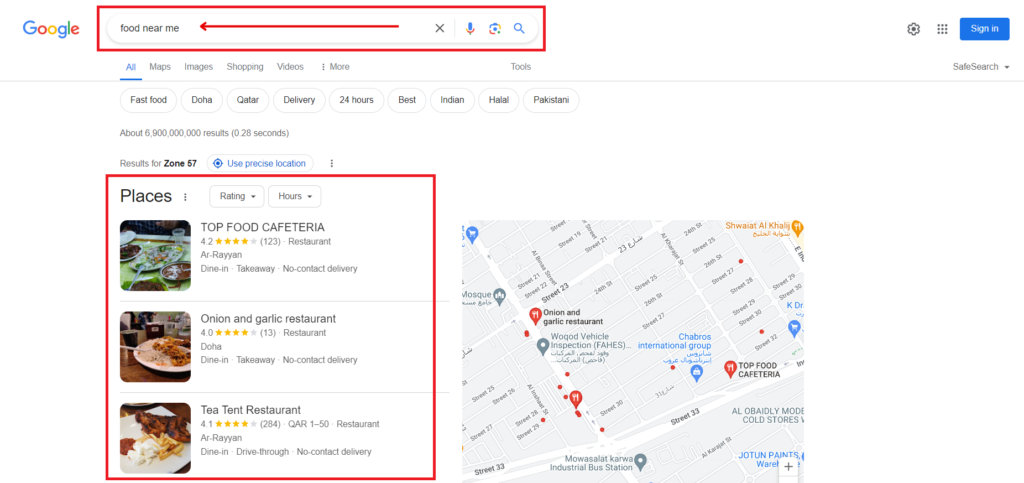
5. E-commerce SEO
- E-commerce SEO specializes in optimizing online stores to increase organic traffic and conversions. E-commerce SEO specialists optimize product pages, category pages, and product listings for relevant keywords, improve site architecture for seamless navigation, optimize product images and descriptions, and implement structured data markup for rich snippets. They also focus on reducing cart abandonment rates, optimizing product recommendations, and improving user experience to drive sales.
6. Voice Search SEO
- With the rise of voice-enabled devices and virtual assistants, Voice Search SEO is gaining prominence. Voice Search SEO specialists optimize content for conversational queries, long-tail keywords, and natural language patterns to align with how users interact with voice search devices. This involves creating FAQ pages, providing concise answers to common questions, and optimizing content for featured snippets to capture voice search traffic effectively.
7. Mobile SEO
- Mobile SEO focuses on optimizing websites for mobile devices to provide a seamless user experience and improve search rankings on mobile search results. Mobile SEO specialists prioritize mobile-friendly design, fast loading times, responsive layouts, and touch-friendly navigation to cater to the growing number of mobile users. They also optimize local search strategies for mobile users, such as click-to-call buttons and location-based targeting.
In conclusion, the field of SEO encompasses a wide array of types and specializations, each playing a crucial role in improving a website’s visibility, traffic, and conversions. Whether it’s technical optimizations, content strategies, local targeting, or emerging trends like voice search and mobile optimization, businesses can benefit from leveraging the expertise of specialized SEO professionals to stay ahead in the competitive digital landscape.
By understanding the nuances of each SEO type and specialization, businesses can develop comprehensive SEO strategies tailored to their unique goals and objectives, driving sustainable growth and success in the online realm.
How SEO works

Let’s delve deeper into the intricacies of how SEO works by breaking it down into several key components:
- Crawling and Indexing: Search engines like Google use automated programs called “crawlers” or “spiders” to browse the web and discover new or updated content. These crawlers follow links from one page to another, collecting data and storing it in an index.
- Keyword Relevance: Keywords are the foundation of SEO. Search engines analyze the content of web pages to determine their relevance to specific search queries. By strategically incorporating relevant keywords into your content, meta tags, and headings, you can increase the likelihood of your pages appearing in search results.
- On-Page Optimization: This involves optimizing individual web pages to improve their search engine rankings. Key elements of on-page optimization include optimizing title tags, meta descriptions, headings, and URLs, as well as ensuring high-quality, relevant content that satisfies user intent.
- Off-Page Factors: In addition to on-page optimization, search engines also consider off-page factors when ranking websites. One of the most important off-page factors is backlinks – links from other websites to yours. Quality backlinks from authoritative websites can significantly boost your site’s credibility and improve its search engine rankings.
- User Experience: Search engines prioritize websites that provide a positive user experience. Factors such as page load speed, mobile-friendliness, and intuitive navigation all contribute to a better user experience, which in turn can positively impact your site’s search engine rankings.
- Algorithm Updates: Search engine algorithms are constantly evolving to provide users with the most relevant and high-quality search results. Keeping up-to-date with algorithm updates and adapting your SEO strategies accordingly is essential for maintaining and improving your website’s search engine rankings over time.
- Monitoring and Analysis: SEO is an ongoing process that requires continuous monitoring and analysis. By regularly tracking key metrics such as organic traffic, keyword rankings, and backlink profiles, you can identify areas for improvement and fine-tune your SEO strategies for optimal results.
Understanding how these various components work together is essential for mastering the art of SEO and achieving long-term success in the competitive world of online marketing.
How to learn SEO

- 1. Online Courses and Tutorials
- Explore reputable online platforms that offer comprehensive SEO courses and tutorials.
- Look for courses that cover fundamental SEO concepts, practical techniques, and advanced strategies.
- Consider enrolling in courses with certification options to validate your skills and knowledge.
- 2. Industry Blogs and Websites
- Follow established SEO blogs and websites to stay updated on the latest trends, news, and best practices in the industry.
- Engage with the SEO community through forums, discussion groups, and social media platforms to exchange ideas and insights.
- 3. Hands-On Practice
- Apply theoretical knowledge by implementing SEO strategies on your own website or blog.
- Experiment with keyword research, on-page optimization, link building, and other SEO techniques to gain practical experience.
- Analyze the results of your efforts and adjust your strategies based on performance metrics and feedback.
- 4. Books and Publications
- Explore books and publications written by SEO experts to deepen your understanding of key concepts and strategies.
- Look for authoritative resources that cover a wide range of topics, from beginner to advanced levels of expertise.
- 5. SEO Tools and Software
- Familiarize yourself with popular SEO tools and software that can aid in keyword research, site analysis, and performance tracking.
- Experiment with different tools to find the ones that best suit your needs and preferences.
- 6. Networking and Mentorship
- Connect with experienced SEO professionals and mentors who can provide guidance, advice, and support as you learn.
- Attend industry events, conferences, and meetups to network with peers and experts in the field.
- 7. Continuous Learning and Adaptation
- SEO is an ever-evolving field, so make a commitment to continuous learning and adaptation.
- Stay updated on algorithm changes, industry trends, and emerging technologies to remain competitive in the SEO landscape.
- Experiment with new strategies and techniques, and be willing to adapt your approach based on the evolving needs of search engines and users.
By combining these learning strategies and resources, you can develop a solid foundation in SEO and become proficient in optimizing websites for better visibility, traffic, and conversions. Remember that mastering SEO is a journey that requires dedication, persistence, and a willingness to learn and grow.
Conclusion
In conclusion, SEO plays a critical role in the success of any online business or website. By understanding the principles of search engine optimization and implementing effective strategies, businesses can improve their online visibility, attract more organic traffic, and ultimately, achieve their marketing goals in today’s competitive digital landscape.



